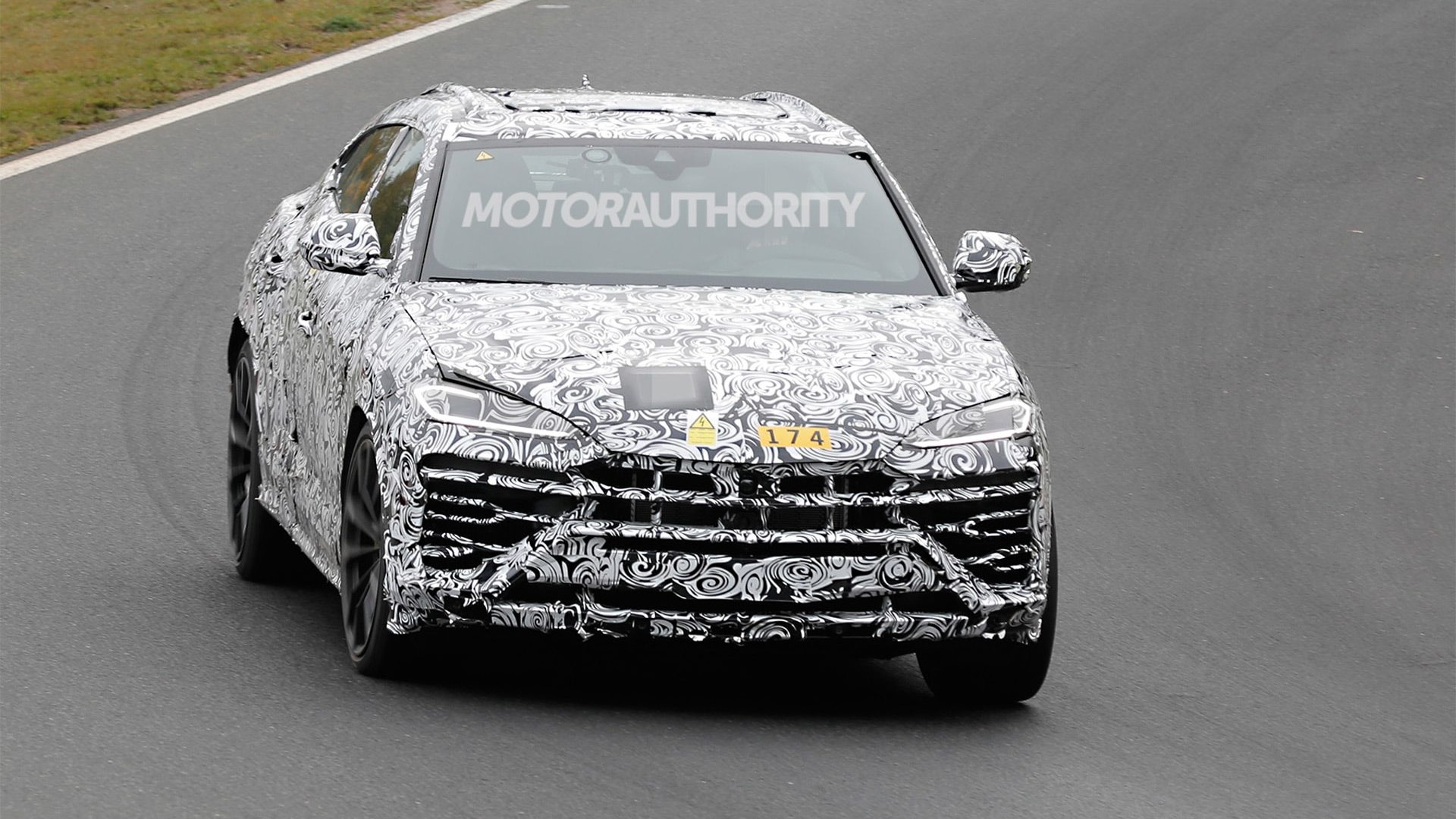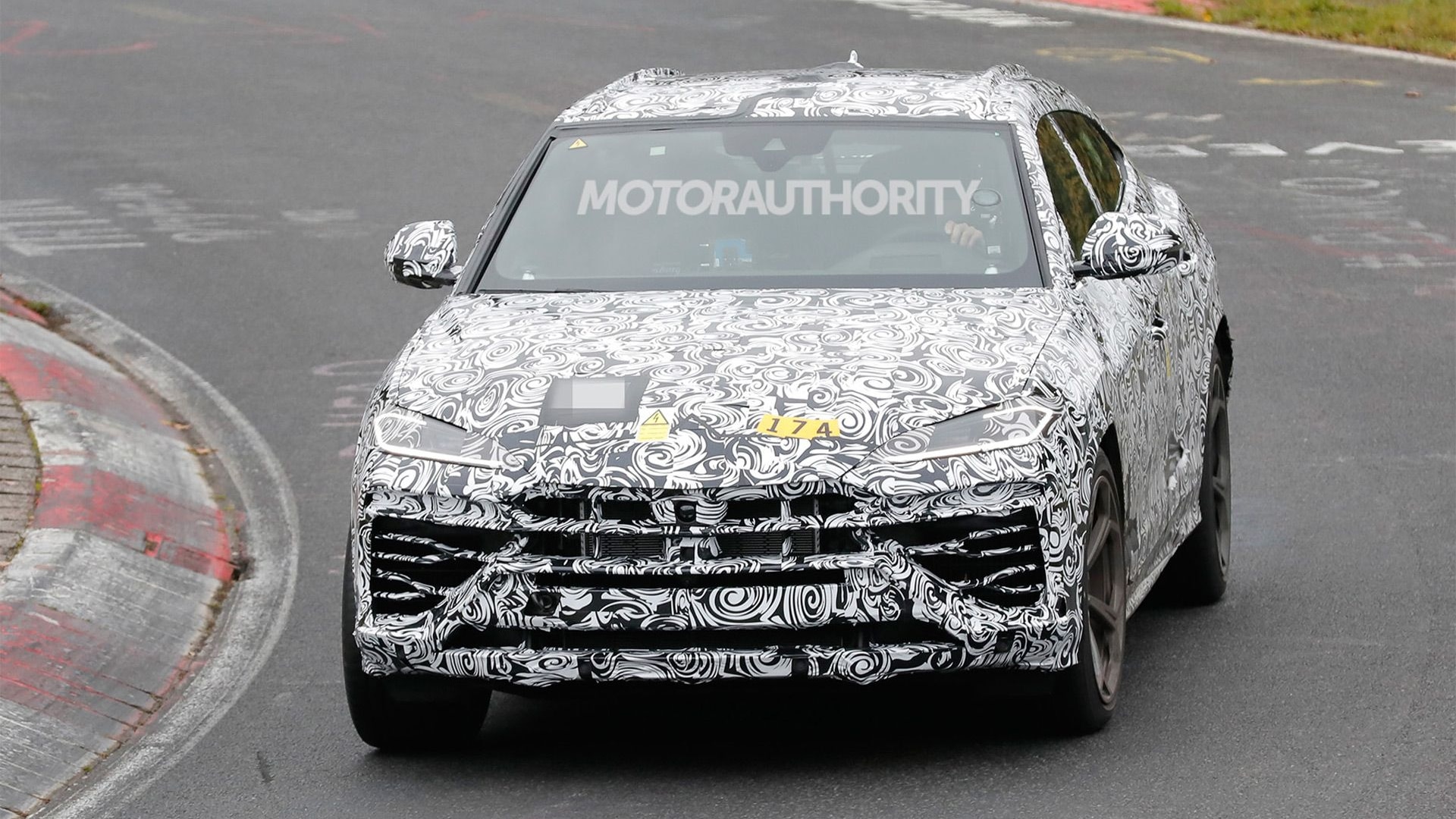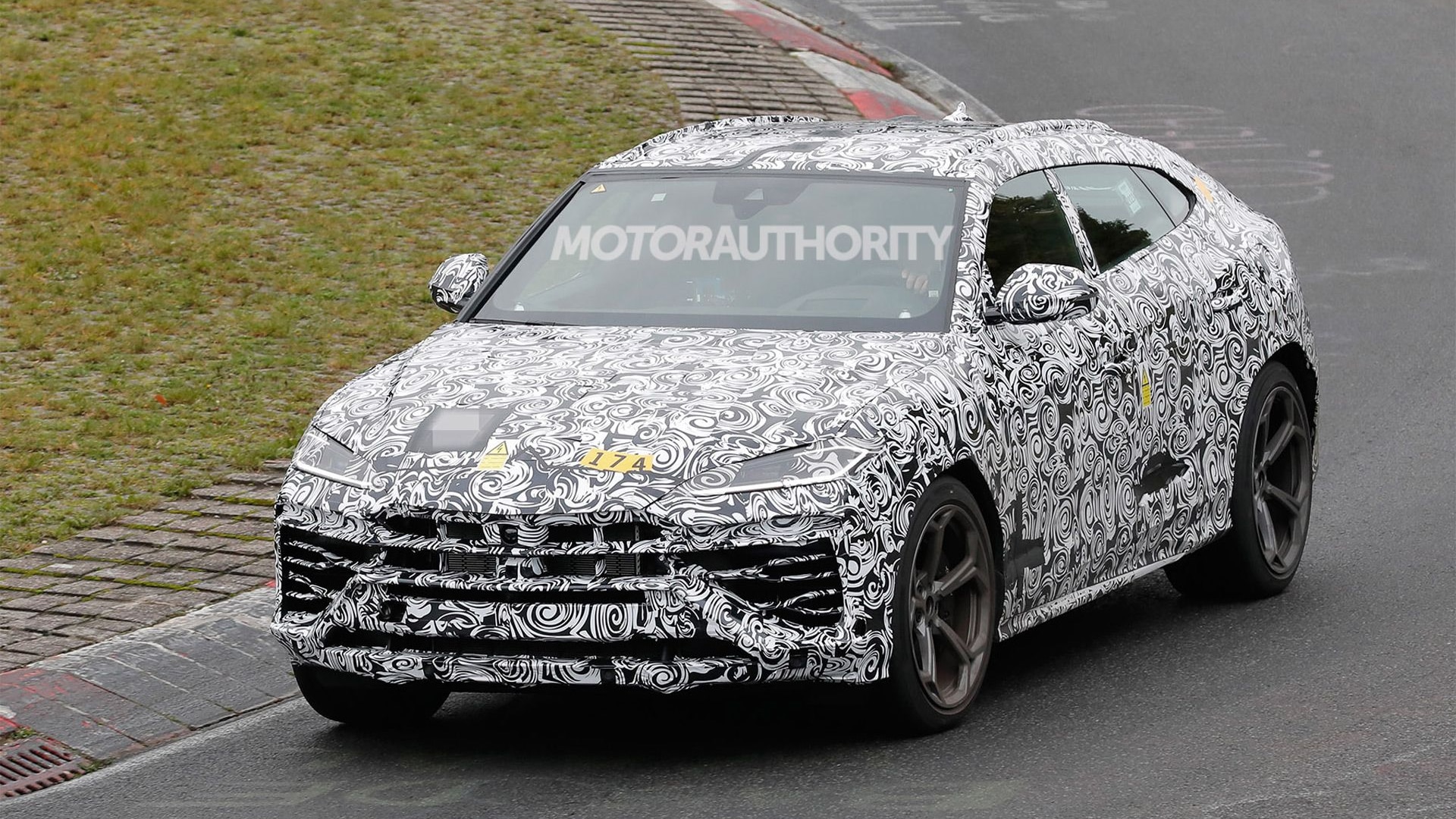Lamborghini last year launched its final car powered solely by an internal-combustion engine in the form of the Huracán Sterrato. It means all future models from the Raging Bull will be electrified, starting with plug-in hybrids and eventually moving to electric vehicles.
The first plug-in hybrid from Lamborghini is the Revuelto, the Aventador-replacing supercar that combines a V-12 with a trio of electric motors for a combined peak of 1,000 hp.
It will be followed next year by a plug-in hybrid Urus and a plug-in hybrid successor to the Huracán. The electrified Urus will come first. It's due in the first half of 2024, and a prototype has been spotted again. There's also a video of it from Car Spy Media.
Warning stickers on the prototype reveal it's an electrified model, and there's no missing the cover for a likely charging port on the driver side rear fender. The fuel filler cap is located in its regular position on the passenger side rear fender.
The Urus, which is Lamborghini's most popular model, was just updated last year to Urus S guise. A sportier Urus Performante was also added last year. The Urus plug-in hybrid looks different than those other variants. It has a unique front fascia, plus a new hood that appears to be devoid of vents. The headlights also look slimmer and are likely fitted with Volkswagen Group's next-generation matrix LED design, which promises to be brighter and more precise than the current technology.
It isn't clear what Lamborghini has planned for the powertrain. It's likely that it will be the Urus' current twin-turbocharged 4.0-liter V-8 paired with a single electric motor. Expect the electric motor to be integrated with the transmission, just like in the plug-in hybrid versions of the related Audi Q7, Bentley Bentayga, Porsche Cayenne, and Volkswagen Touareg. The same setup features in the related 2024 Porsche Cayenne Turbo E-Hybrid, where it delivers a peak of 729 hp.
With the aid of an electric motor, the Urus plug-in hybrid should deliver more than the 657-hp peak rating of the current Urus range. A small electric range should also be possible, which would allow the Urus to travel in cities that place restrictions on vehicles without electric or low-emissions modes.
A version of the Urus' V-8 plug-in hybrid system is also expected to power the Huracán successor, meaning the end of the V-10. That car's arrival will be the end of the era of Lamborghinis powered solely by a gas engine.






